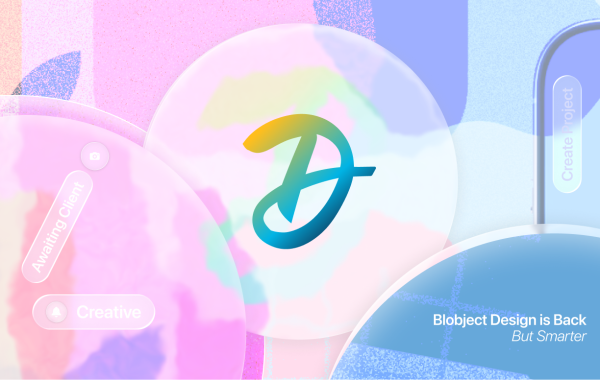Great design doesn’t happen by accident. Quality design requires expertise that goes beyond just looks. However, over the last decade or so, as demand has grown for graphic design across varying mediums, as have the cases of “design-gone-wrong!”
Sometimes it’s because companies have made the decision to do it themselves. Other times it’s because the business has had a miss with hiring a designer. In any case, it’s important to know what to look out for. Here are some common graphic design mistakes that businesses make:
#1. Not checking that the design will suit the medium
Have you seen huge graphic images that take up too much space on a mobile screen? What about pixelated images that look poor on a desktop screen? Or even worse, the results when someone tries to print a design onto a medium when the image size isn’t large enough?
Not checking that the design is a good fit for the medium is a mistake that a lot of businesses make. They assume that they can take the one design file they have and use it across different channels or mediums, when in reality it isn’t sized to fit or even designed in such a way to suit the medium.
It’s important to use the right type of design file for the job.

#2. Lack of whitespace
In graphic design, less, is often more. White space (or negative space) is used artfully by graphic designers as an important element of design. It helps to draw attention to the important areas that you want people to take notice of and to improve readability.
Lack of whitespace is a common mistake made by DIY or amateur designers. They get the urge to fill the space when it would be better to just leave it alone.

#3. Not proofreading
All it takes is a misplaced comma and your design can go off the rails! Punctuation adds important meaning or can change the meaning entirely for a sentence (like the example shown below).
Besides punctuation, proofreading for spelling is also important! It can be embarrassing and potentially costly.

#4. Poor kerning
Kerning is the term for the spacing between letters of each word in a design. Kerning helps to keep any words organized and easy to read. Poor kerning is where there is either too much or too little space between letters and words. Sometimes, the result of too little space is that the word ends up looking like something else altogether.

We found this example on Inspiration Feed:
#5. Overuse of stock images
Stock images can be fine to fill in gaps or to break up blocks of text on your website. They’re a poor design choice if they’re your only solution for your design needs.
For one thing, you can end up using the same images that others are also using. One recent trend has been the use of flat, vector images on websites. If every website starts using similar stock images, it becomes difficult to distinguish between them (and it’s super-common that the same stock images are the most popular).
#6. Designing for yourself rather than your audience
If your answer to “why did you choose this design?” is “because I liked it the most,” then there’s a chance you’re designing for yourself rather than your audience. Why does this matter? Sometimes companies make the mistake of choosing design elements that don’t really appeal to their target audience, mostly because the design appealed to them internally.
Design has to be centered on the customer you want to attract. We always suggest to clients that they spend a bit of time carefully defining their target audience before embarking on design work. What are their goals? What sort of aesthetic will draw them in?
#7. Poor choice of design hierarchy
Design hierarchy refers to how the design elements are organized so that the audience understands what is the most important. It dictates how their eyes move over a design – ideally, this should be a smooth process.
Poor choice of design hierarchy mixes up the design elements and has people’s eyes jumping all over the place. This can cause the viewer to miss the most important part of the message that you want to communicate. Hierarchy may be communicated through font size, graphic elements, and use of color – it requires careful consideration.

#8. Not building versatility into design
The best graphic design tends to be long-lasting and able to be applied to multiple different design scenarios. For example, if you own a retail store, you probably want your logo on your website, your shopping bags, on the packaging of products and even on things like t-shirts for staff.
The best, most versatile designs tend to be relatively simple and easily replicable. This helps you to establish some consistency, as well as to save time and money by not having to reinvent the wheel (or design) for each use.
A big mistake is to make choices that are too complex to be versatile, or that simply don’t translate well across different mediums.
#9. Too many mismatching fonts
It’s a bit of a rookie mistake to get carried away with a mismatch of different fonts. In fact, this can be one of the first signs of amateur design.
Font choice should help to make your designs readable and accessible. They should also convey some sort of message about your brand. A “loud” new font might be tempting to use, but is it really a good fit if your aesthetic leans to a clean, classical look?
As a rule of thumb, stick with two to three fonts at a maximum, used as part of your design hierarchy. The fonts should work well together. Again, this is another area in which to consider the tastes and preferences of your audience.

#10. Inadequate contrast
Contrast is an important design element because it helps to ensure that the most important parts of your messaging come across. If you’ve ever tried to read a pale yellow font on a white background, you’ll know what we mean!
Consider contrast in terms of the shades you choose as well as their level of saturation. Use contrast to help maintain a design hierarchy, too.

#11. Failing to communicate clearly
Sometimes both designers AND non-designers do this. They get so caught up in creating a pretty design that they miss making sure it clearly communicates the desired message. Aesthetics are important, but ultimately, design for businesses should lead to the achievement of business goals. If messaging gets lost in translation, then the design as a whole is a miss.

Final thoughts
All of the mistakes highlighted happen daily when businesses hire the wrong designer for the job. First, don’t rush it, expect a designer to spend a bit of time learning about your business and the customers you want to attract before they start work. Spend time discussing your goals and utilize inspiration to help explain your desired aesthetic.
This is one advantage of working with Designed.co. We spend the time getting to know our clients and utilize our proprietary tech to keep brands consistent across all mediums. The result is high-quality, professional design that enhances your brand and follows experienced design principles.
Want to learn more? Book a demo with Designed.Co here today to see how we can help your business shine through design.



